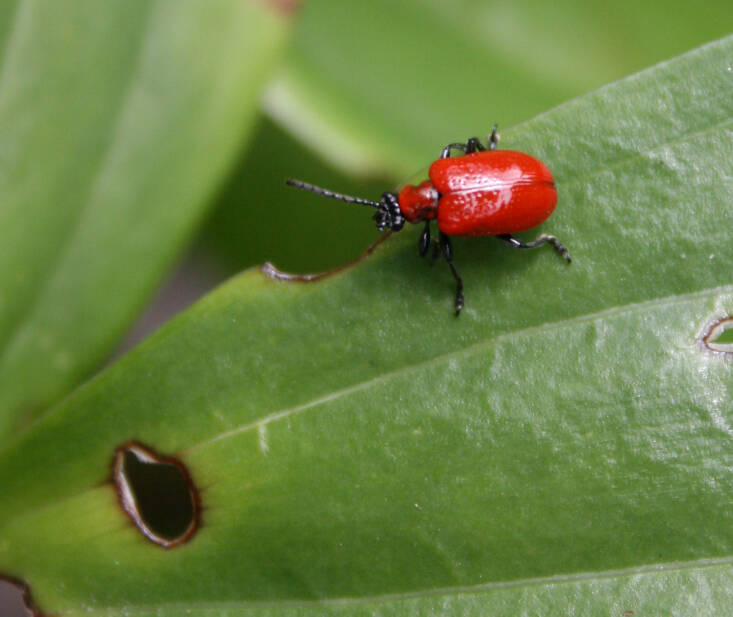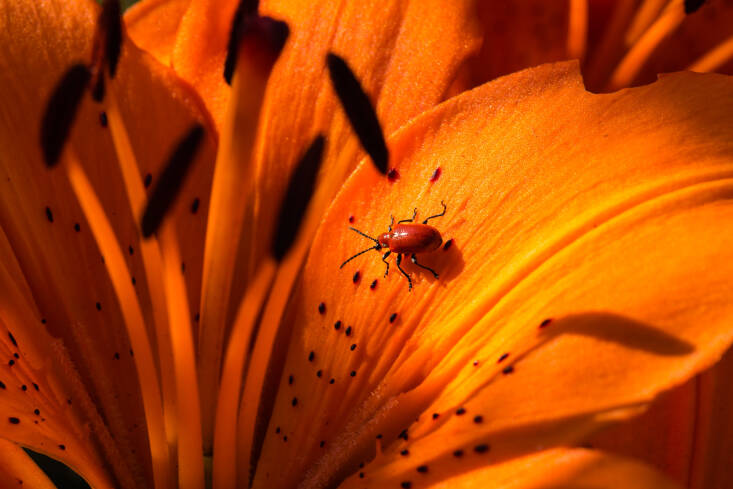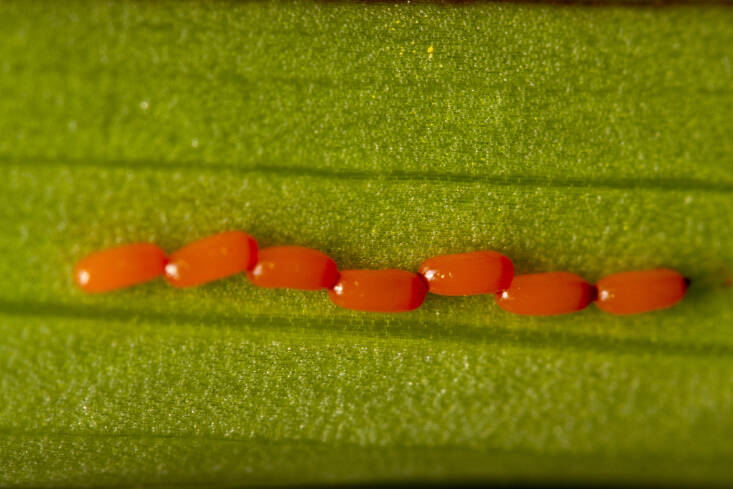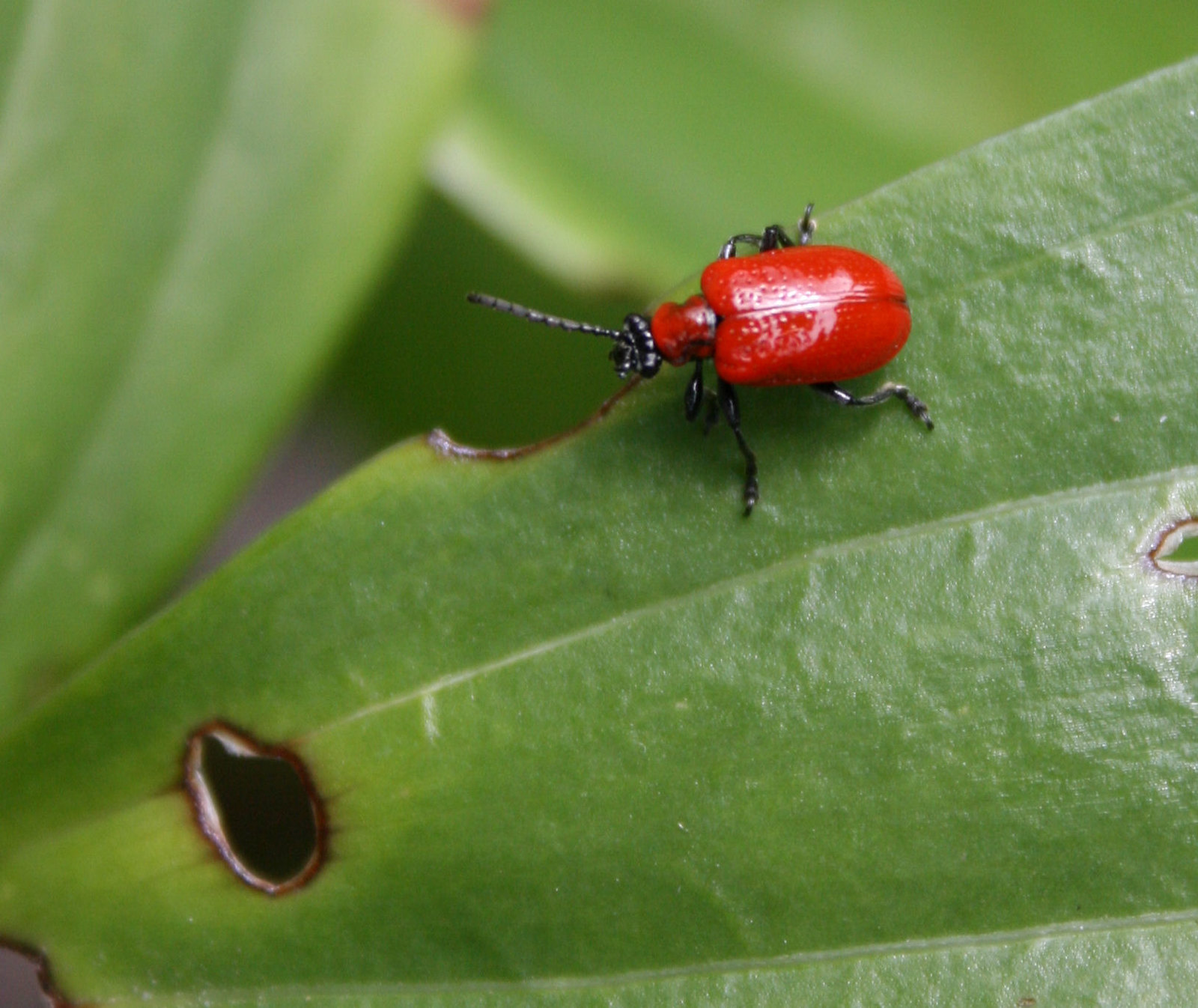I can tell when spring is in full force in many different ways. The longer days! The warmer weather! The beautiful flowers! The birdsong! The social media posts asking what is this bright red bug eating my lilies?
It’s not the height of spring in my area until my friends start posting photos of bright red beetles and asking how to stop them. Here’s how I answer their questions.
What are scarlet lily beetles?

Scarlet lily beetles are small half-inch-long beetles that are bright red, scarlet to be exact, on top and black on the bottom. They came from Europe and Asia at some point in the last century and have been slowly munching their way through the US and Canada. They have a voracious appetite for plants in the lily family. Only true lilies in the Liliaceae family, such as asiatic lilies and fritillaria, are affected, but not daylilies which are in a different plant family. They may also take a bite out of a hollyhock or a hosta but will generally leave them alone.
Why are they a problem?

Unlike most other plants, lilies grow only one set of leaves a year, and once they are gone, they are gone for the year. The scarlet lily beetle can strip the leaves off a lily and kill the plant in just a few days.
Scarlet lily beetles are sneaky. While they are very easy to spot, being bright red, they are hard to remove. With any disturbance, their defensive response is to very quickly fall off the leaf and land on their back on the ground. But now you’re no longer looking for a bright red bug; you’re looking for a black one, which is a decidedly harder task as they now blend in with the soil, mulch, or leaf litter.
They’re also yucky. The larvae of scarlet lily beetles carry their poop on their backs to make them less appealing to birds. And the humans trying to pick them off the leaves.
How do you control them?

- Check your lilies in the morning. Insects are slower in the morning before the sun warms them.
- Check the underside of the leaves for eggs—they are red and laid in a straight line.
- Get a cup of soap water and hold it under the beetle. Tap the leaf and the beetle will fall into the cup.
- Handpick, with gloves, larvae and egg masses. Drop them into the soapy water.
- Non-chemical means should be used first due to the nearby pollinators.
- Discard any eaten leaves.
- If you have a more extensive infestation, use insecticidal soap or neem oil. Follow the directions exactly and avoid all beneficial insects.
- If all else fails, look for resistant lily varieties online or at your local garden center.
While scarlet lily beetles can be devastating, with a bit of vigilance and a cup full of soapy water, you can interrupt the beetle’s life cycle and save your lilies.
See also:
(Visited 1 times, 1 visits today)


